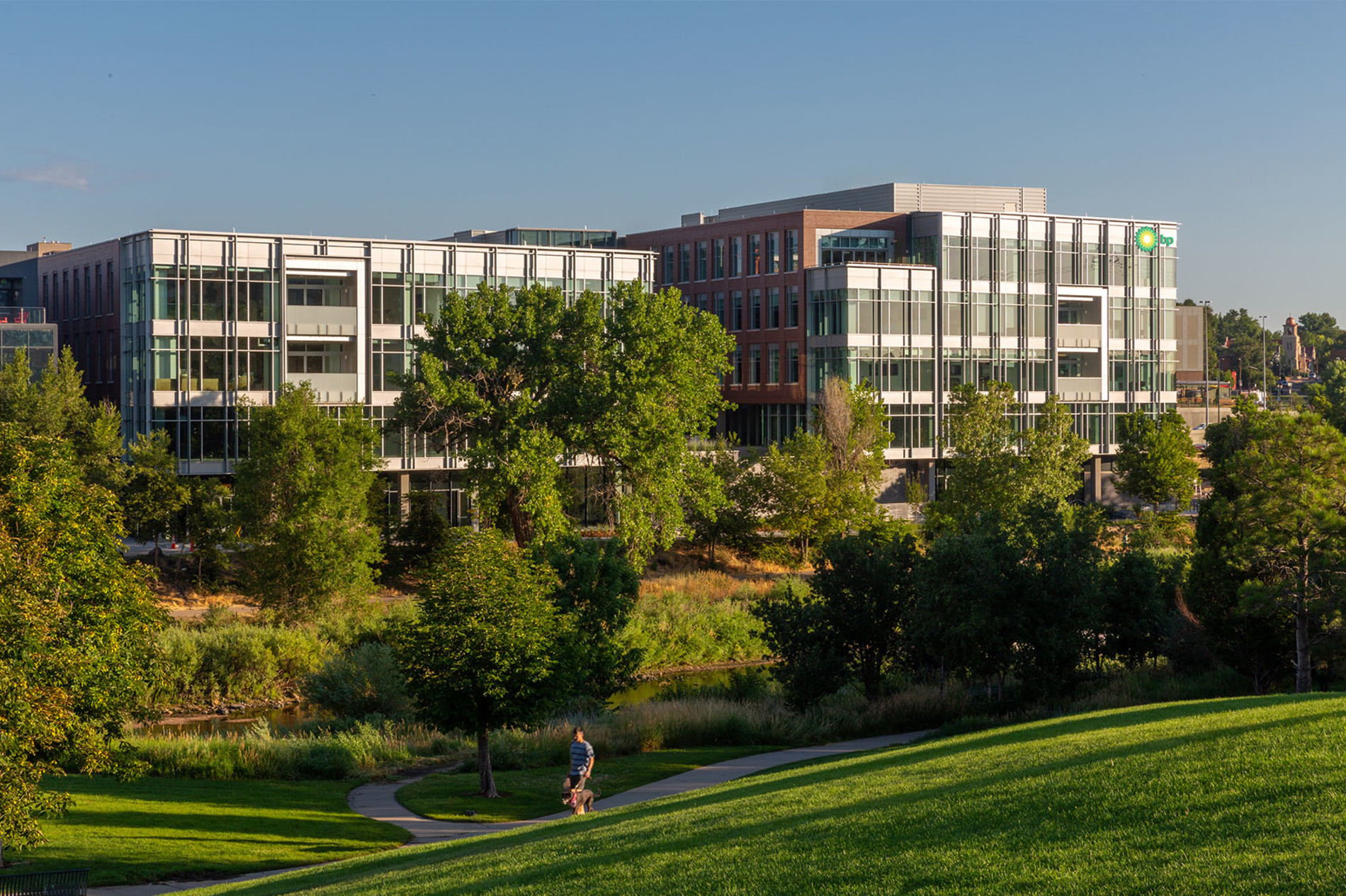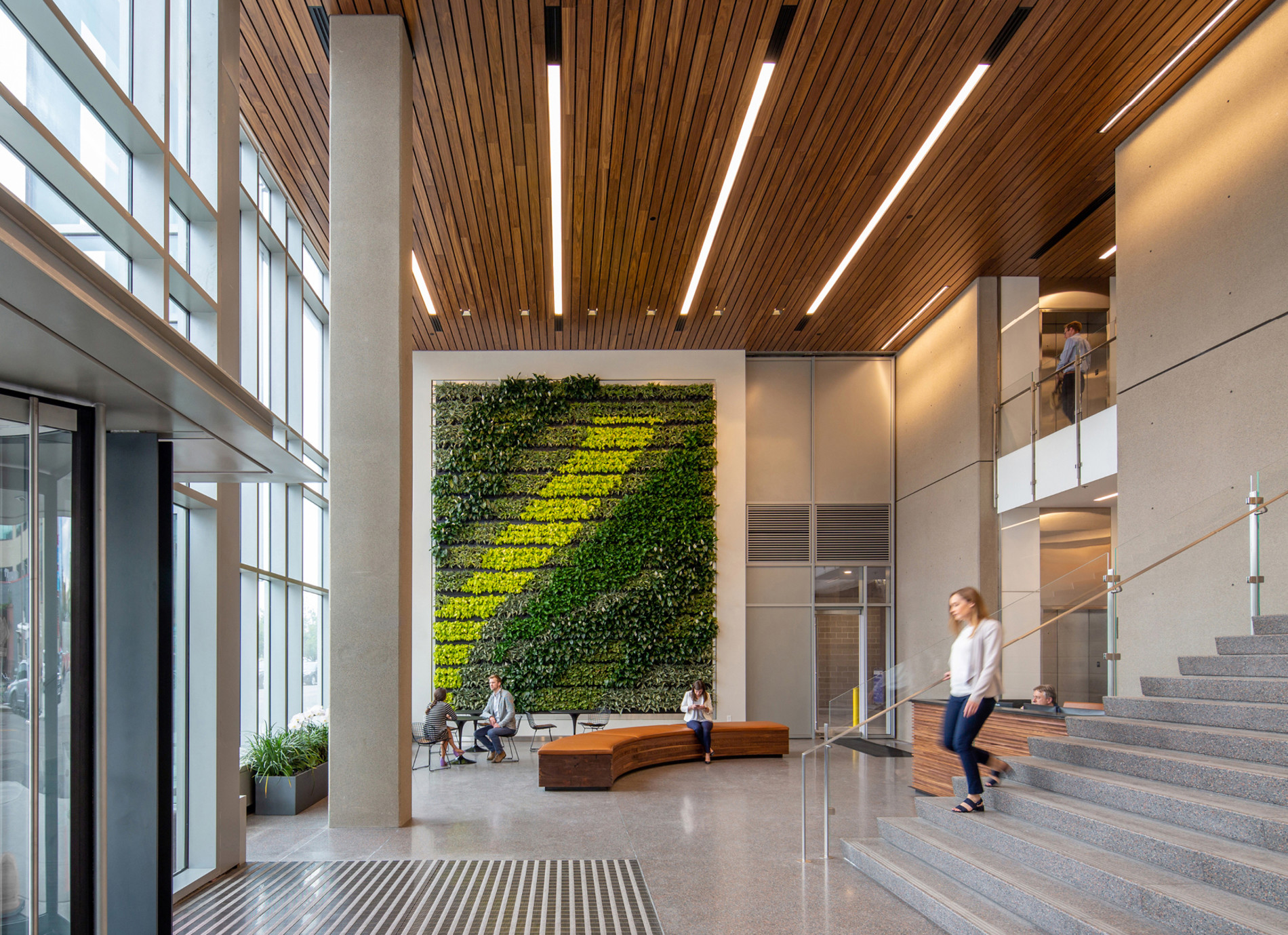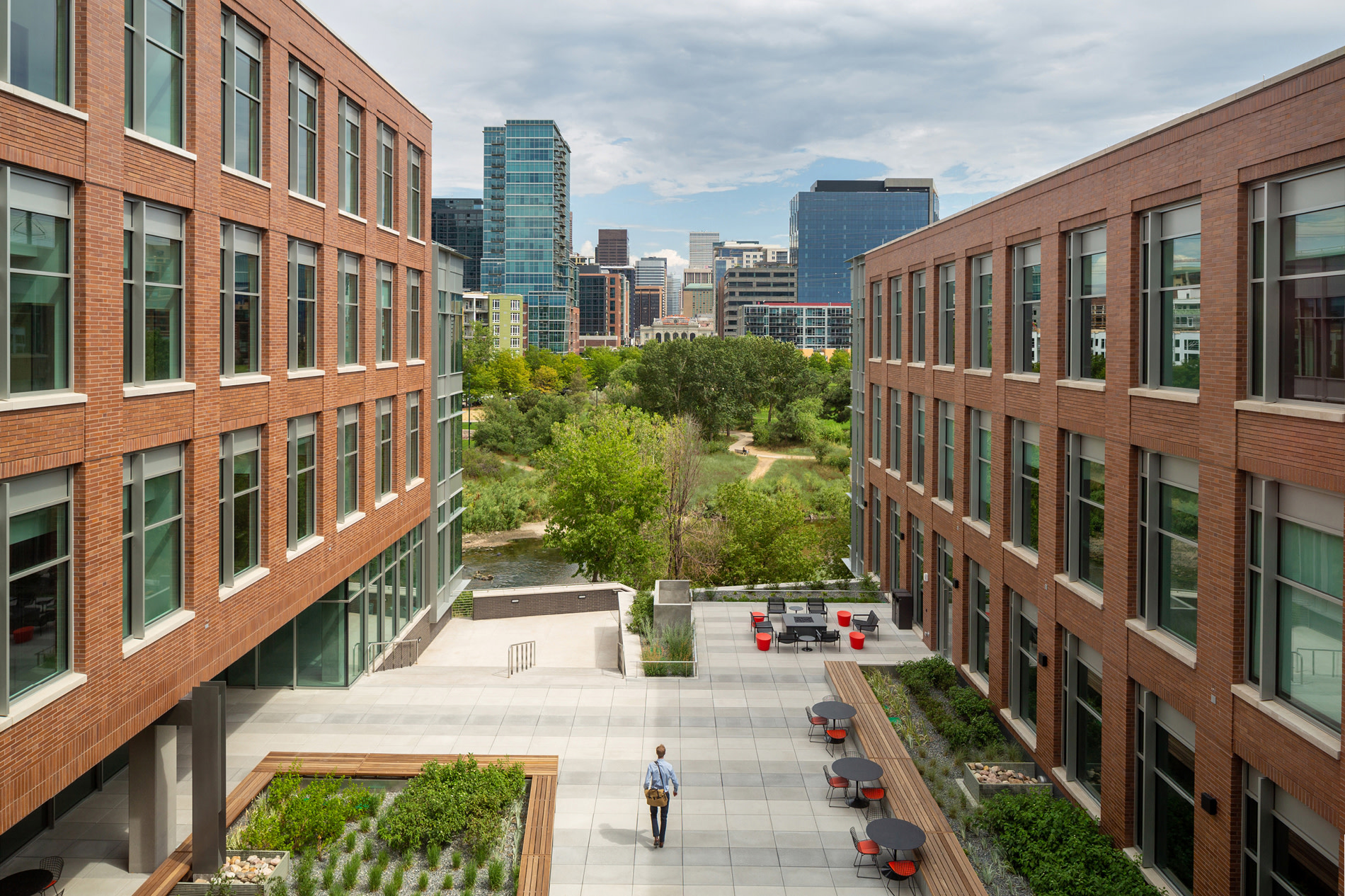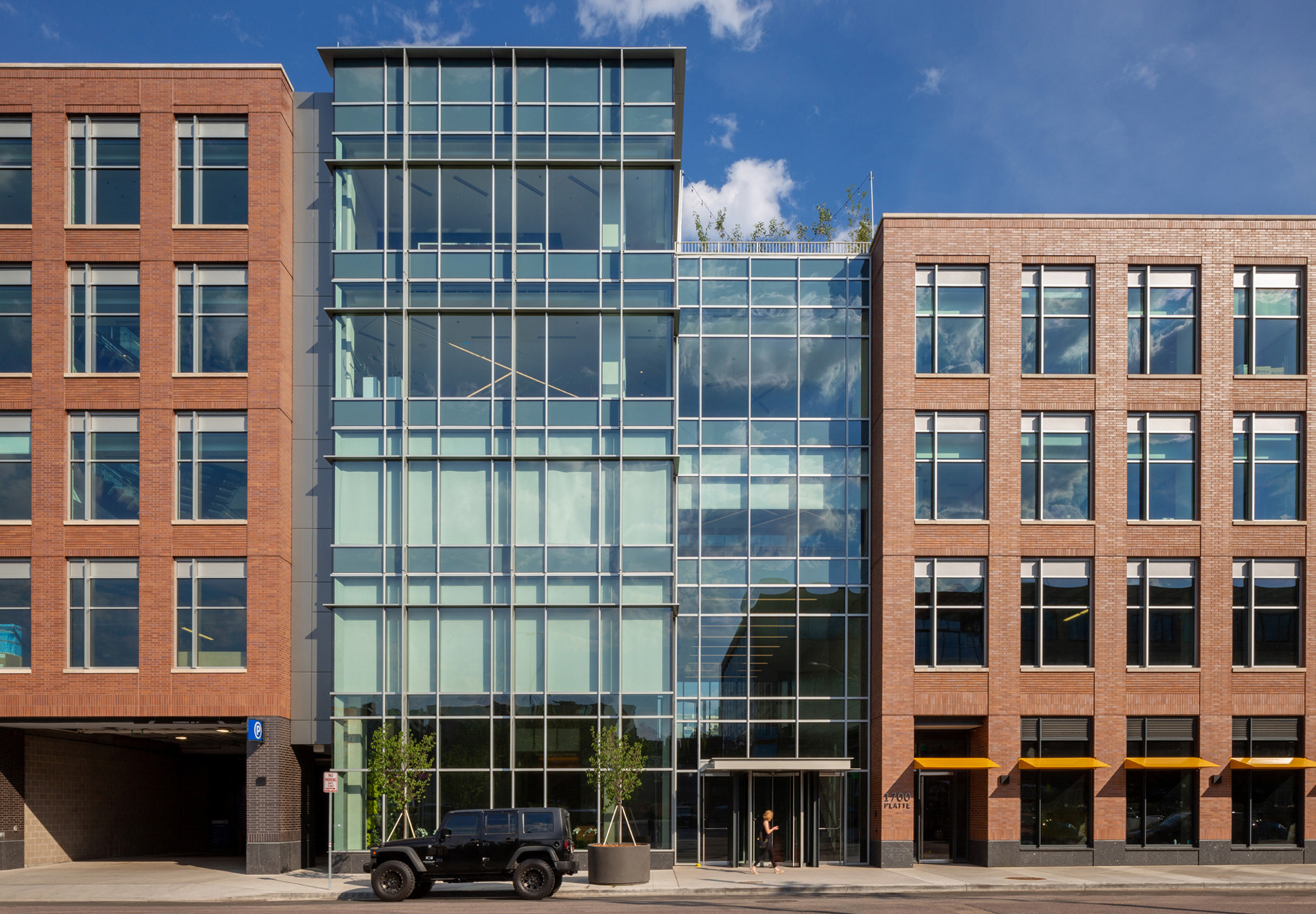
In the Central Platte Valley just west of downtown Denver, Riverview at 1700 Platte offers the best of two worlds: the city and the great outdoors. The 213,713-square-foot Class A office building is the new headquarters for energy giant BP's U.S. Lower 48 onshore oil and gas business.
With two wings linked by an eye-catching glazed bridge, the U-shaped design ties the urban location to the west with the South Platte River to the east. At the heart of the campus, a central terraced courtyard balances the two environments in grand fashion.
"The building deliberately engages strongly with both the historic context of Platte Street and the riverfront," says David Tryba, FAIA, founder of Denver-based Tryba Architects.
John McIntyre, ANZIA, principal with Tryba, says the Platte Street side "is responding to the industrial character of the street." The articulated brick facade "closes the gap" between the historic storefronts. "There was a lot of work done on the brick itself to accent its richness," he says.
The heavily windowed east side faces the South Platte River as a counterpoint to the street. "The idea is to bring nature into and through the building," says McIntyre. "Being high on the river bank provides a real sense of being projected out and into the landscape."

The river, the bike path, and the courtyard are part of this landscape, accentuated by a 425-square-foot green wall within the ground-floor lobby. The courtyard doubles as an amenity and a passive storm water quality filtration system, the first of its kind in Denver. Pillars and other structural elements serve to guide water through the system and into the river.
"The infrastructure is celebrated," says Tryba, noting that the firm's work at Denver Botanic Gardens helped inform the design. "Fully integrating landscape with the building is a critical element in our body of work."
The building is aligned on an axis between two of Denver's most vibrant neighborhoods in LoDo and LoHi. "You have that view in both directions: up the hill to Lower Highlands and straight to Union Station and 17th Street behind it," says McIntyre. "There are also views within the site. It is a community of buildings rather than a single building."

That dovetails into a closely held tenet at Tryba Architects: Buildings should be four-sided and contribute to the public realm on each elevation. That means the service area and mechanical and HVAC infrastructure are carefully integrated and minimized.
Another critical element is the flexible floor plans that push office space to the wings and public space into the heart of the building. "It adds community through circulation," says McIntyre. "We're bringing people together at this central vertical connection."
BP's Lower 48 Headquarters will occupy the third through fifth floors—about 70 percent of the square footage—with interiors designed by Stantec. BP is celebrating the grand opening in September 2018. Ground-floor retail tenants will include Maria Empanada and are due to open in the space by early 2019.

"We selected the Riverview building because of its striking contemporary design and prime location—right in the heart of an authentic local community that fronts one of most beautiful natural river systems in the city," says Laura Leffler, chief of staff and head of communications and culture of BP's U.S. Lower 48 onshore oil and gas business. "We believe it will be the perfect home for the premier company we are building in Denver."
Denver-based developer Trammell Crow Company acquired the site from Empire Staple in 2015 and worked with Saunders Construction to bring the Tryba vision to life. Ground was broken in 2016.
"Tryba Architects responded to an extremely unique location with the site plan and building design for Riverview at 1700 Platte Street," says Bill Mosher, senior managing director of Trammell Crow. The end result, he adds, "has attracted important credit tenants, celebrates nature in the city, and successfully contributes to Platte Street as a place.”